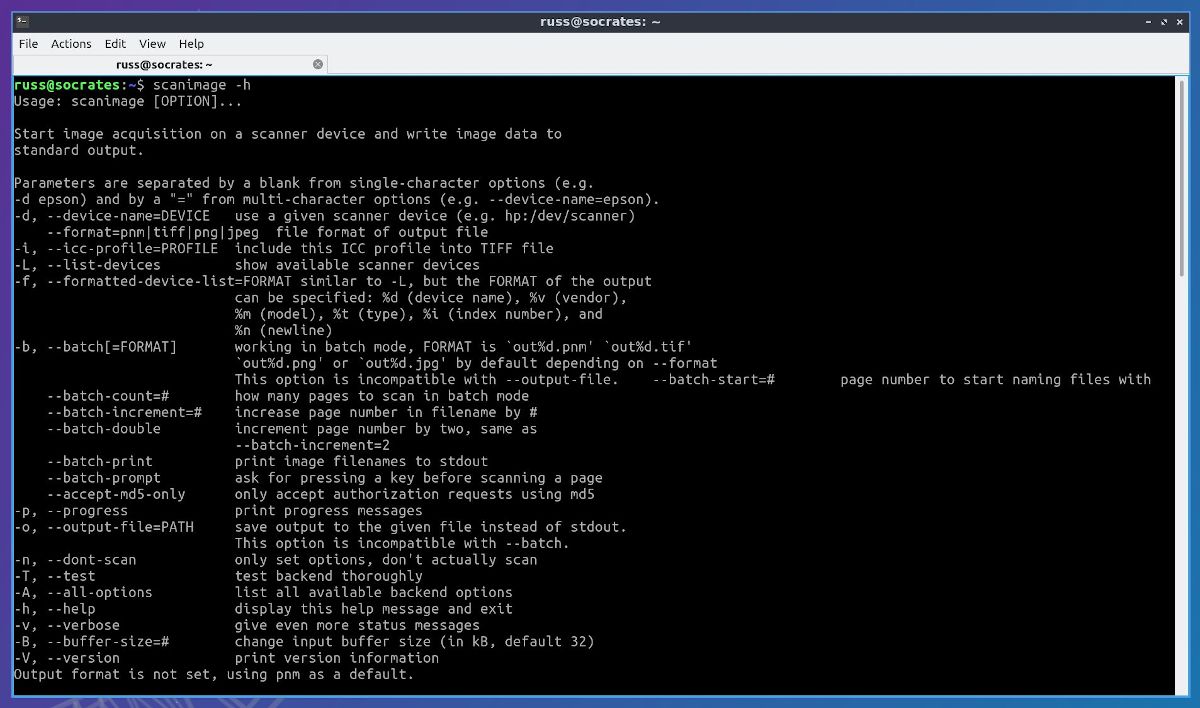

- #Linux network scanner command open port how to#
- #Linux network scanner command open port code#
- #Linux network scanner command open port series#
Some might assume that closed ports aren’t accessible, but this isn’t the case. As useful as it is, an open port can be seen like an open window. The most important objective of Nmap and other types of port checkers is to find open ports.

We also have XMAS scans, which are also known as the “sneakiest” port scanning mechanisms since they are rarely blocked by firewalls. They’re the simplest port scans, which take the form of internet control message protocol (ICMP) requests. You also have the option to choose scans using TCP connect, UDP port scanning, and more. The SYN scan requires the following command “nmap -sT 192.168.1.1.” When the scan is complete, it sends an SYN message only to Nmap. This type of scan can be used for scanning thousands of ports in just seconds. Nmap uses the SYN scan by default, which is also known as half-open scanning. There are some exceptions, like UDP and SCTP scans combined with TCP scans. Note that you can only use one method at a time. Other than open and closed, ports can also be filtered, unfiltered, open/filtered, and closed/filtered. Once the scan is over, Nmap will return a list of ports that all have different states.
#Linux network scanner command open port code#
This is why you need to be careful when pasting the code in the dialogue box. You may notice that the commands for the 100 most common ports and all ports are almost identical, the only difference being the initial letter (“F” and “p”). If you want to scan a single port, the command to enter is “nmap -p 22 192.168.1.1.” For scanning a range of ports, you would need to insert the following command in the Nmap window: “nmap -p 1-100 192.168.1.1.” Finally, for scanning the 100 most common ports, the corresponding command is “nmap -F 192.168.1.1.” The Nmap command you will need to scan all ports is “nmap –p– 192.168.0.1,” which scans ports 0 through 65,535. There’s even a command to scan the 100 most used ports.
#Linux network scanner command open port series#
Nmap lets you scan all ports, a single port, or a series of ports. Once you scan all your ports, you can determine which ones are open and possibly exposing your network’s sensitive information. To put it simply, open ports are used for sending and receiving information. If a port is open, it’s configured to accept packets, which are groups of data sent over computer networks. Port scanning is a process that lets you determine which ports within a network are open and which are closed. Today, we’ll focus on scanning for open ports. Some of the most important features of Nmap include port scanning, host discovery, version detection, network inventory, TCP, or IP stack fingerprinting, etc.

This program was first developed for Linux, but now it can be used on other operating systems, like Windows, macOS, and BSD. Nmap or Network Mapper is a network tool used for scanning services, operating systems, and hosts within a computer network. We’ll also explain what port scanning is and why it’s so useful.

#Linux network scanner command open port how to#
In this article, we’ll show you how to scan all ports using the Nmap program.


 0 kommentar(er)
0 kommentar(er)
